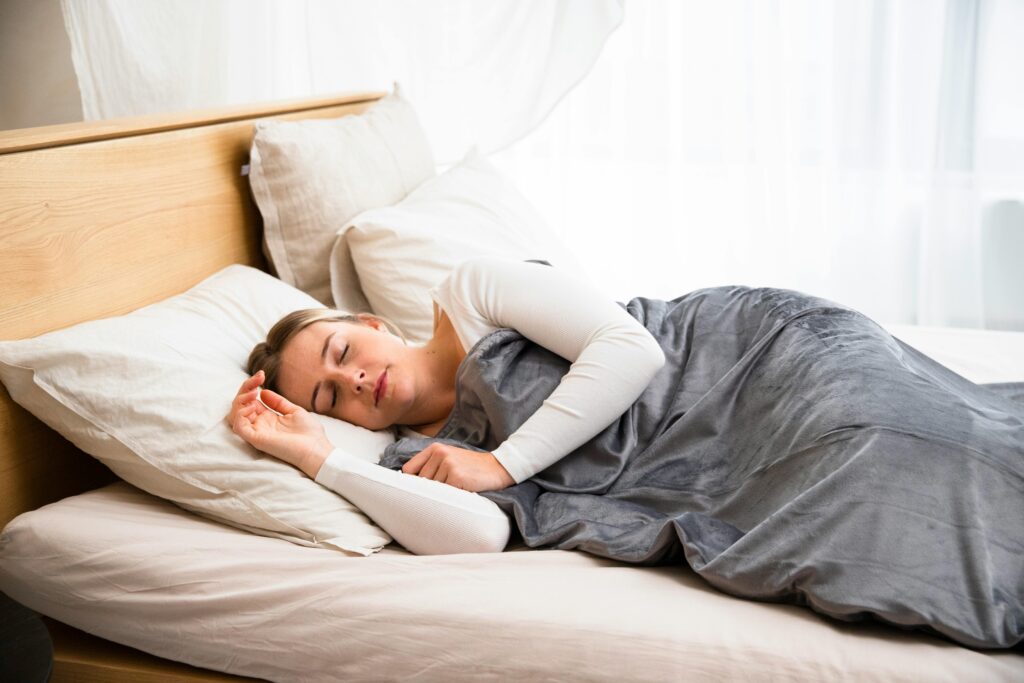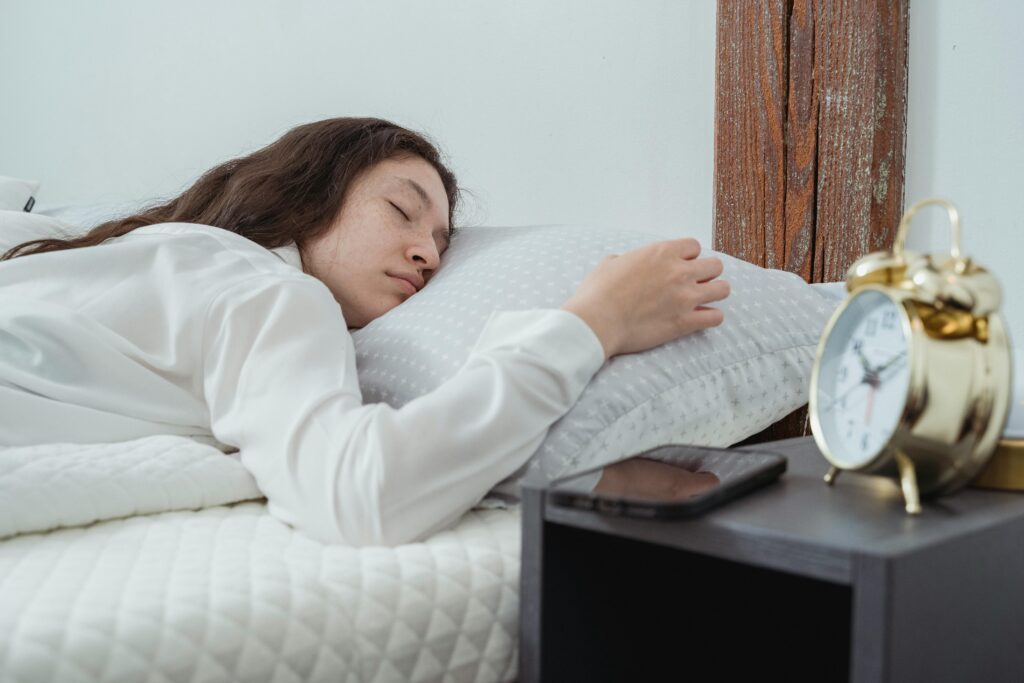Finding the proper sleeping position can make a big difference if you have asthma. Here are some Best Sleeping Positions for Asthma Relief
1. Sleeping on Your Left Side with a Pillow Between Your Legs.
- This position can help with acid reflux, which can trigger asthma symptoms.
- Placing a pillow between your legs can make you more comfortable and keep your spine aligned.
2. Sleeping on Your Back with Elevated Shoulders and Neck.
- Elevating your shoulders and neck with pillows can help open your airways and reduce asthma attacks.
- It also prevents postnasal drip and coughing by keeping your airways clear.
3. Sleeping on Your Back with Head Elevated and Pillow Under Knees.
- Propping your head and shoulders up can also open your airways.
- Adding a pillow under your knees makes this position more comfortable and helps you stay in it throughout the night.

Topic: Preventing Nocturnal Asthma Attacks
- Tips for a Healthy Bedroom Environment.
Creating a bedroom environment that’s free of allergens can help prevent asthma attacks at night. Here’s how:
01. Remove Allergens.
- Dust, dust mites, and other allergens can trigger asthma attacks. Dust and vacuum your bedroom regularly to keep them at bay.
- Wash your bedding weekly to remove allergens and bacteria.
02. Use Dust-Proof Covers.
- Dust-proof mattress covers and pillows can prevent dust mites from breeding in your bedding.
03. Get Rid of Damp and Mold.
- Damp and mold can irritate your airways. Remove them from your bedroom to reduce the risk of asthma attacks.
04. Use Humidifiers and Air Purifier.
- Dry air and allergens can irritate your airways. Humidifiers and air purifiers can help keep your bedroom air clean and moist.
05. Keep Windows Closed.
- Opening windows can let allergens into your bedroom. Keep them closed to reduce your exposure to asthma triggers.
06. Keep Pets Out.
- Pet dander can trigger asthma symptoms. Keep pets out of your bedroom to reduce allergen exposure.
Topic: When to Seek Help
- Knowing When to See a Doctor.
If you’re experiencing frequent nocturnal asthma attacks, it’s essential to seek medical help. Here’s why.
- Frequent nighttime asthma episodes may indicate a worsening condition.
- Your doctor can diagnose the severity of your asthma and recommend the best treatment for you.

FAQs: Sleeping with Asthma
Q: How can I calm an asthma cough at night?
A: Breathing exercises, staying hydrated, and using an inhaler can help calm an asthma cough at night.
Q: Why is asthma worse at night?
A: Breathing cold, dry air at night can irritate the airways and trigger asthma symptoms. Other factors, like allergens in the bedroom or reflux, can also worsen asthma at night.
Q: What’s the best sleeping position for breathing problems?
A: Sleeping on your back with your head and shoulders raised is best for breathing problems, as it helps open the airways.


1 thought on “Best Sleeping Positions For Asthma Relief”